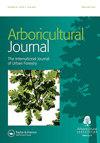街边树木的政治
Q3 Agricultural and Biological Sciences
引用次数: 0
摘要
这本书非常适合我们这个时代,它关注的是行道树的政治,以及管理它们的规划、种植和维护的行动者、机构和过程。在二十一世纪日益严峻的环境和社会挑战的背景下,多学科创新方法尤为重要。作品揭示了现代世界的本质、城市生活、社会变革和新兴的政治冲突。这本书分为三个主要部分:(1)历史视角-从不同的历史角度看待街道树木和政治,庆祝不同文化的多样性。(2)价值、政策和管理-讨论街道树的价值、政策和管理。本课程探讨当代重要问题及其对我们城市环境的贡献(包括物理和哲学)。第二部分从政治经济学的角度探讨文化特质,并对主导当前政治叙事的新自由主义愿景提出挑战。(3)社区参与、公民行动和治理。本节对社区参与、民事诉讼和治理进行了案例研究,并以国际实例展示了与不同政治方向和意图相关的不同方法。考虑了法律的约束和人民力量的重要性。通过其跨学科的方法,该卷提供了一个具有洞察力和解释相关的学者,从业者,政治家,活动家和更广泛的利益相关者公众的信息库。这可能有助于促进更公平的政治辩论,以促进更民主的环境,这些环境是可持续的、公平的、舒适的,对城市社区来说更重要的是,更健康。编辑们完成了一项出色的工作,从近30个人的贡献中产生了一本紧凑而连贯的书。这本书以黑白照片和线条图为插图。本文章由计算机程序翻译,如有差异,请以英文原文为准。
The politics of street trees
Very much a book for our times, the volume focuses on the politics of street trees together with the actors, institutions, and processes, which govern their planning, planting, and maintenance. The multi-disciplinary innovative approach is especially important in the context of the mounting environmental and societal challenges of the twenty-first century. The work reveals much about the nature of our modern world, urban living, social change, and emerging political conflicts. The book is divided into three main sections: (1) Historic perspectives – providing different historical perspectives on street trees and politics, celebrating diversity in different cultures. (2) Values, policy, and management – with discussion of street tree values, policy, and management. This addresses contemporary issues of significance and their contributions to our urban environment (both physically and philosophically). This second section explores cultural idiosyncrasies and those from perspectives of political economy and challenges the neo-liberal visions, which dominate current political narratives. (3) Community engagement, civic action, and governance. This section has case studies of community engagement, civil action, and governance with international examples showing contrasting approaches associated with different political directions and intentions. The constraints of law and the importance of people-power are considered. Through its interdisciplinary approach, the volume delivers an information base with insight and interpretation relevant to academics, practitioners, politicians, activists, and the wider stakeholder public. Potentially this will help contribute to a fairer political debate to promote more democratic environments, which are sustainable, equitable, comfortable, and importantly for urban communities, healthier. The editors have done a fine job producing a tight and coherent volume from nearly 30 individual contributions. The book is illustrated throughout with black and white photographs and line drawings.
求助全文
通过发布文献求助,成功后即可免费获取论文全文。
去求助
来源期刊

Arboricultural Journal
Agricultural and Biological Sciences-Agronomy and Crop Science
CiteScore
2.40
自引率
0.00%
发文量
28
期刊介绍:
The Arboricultural Journal is published and issued free to members* of the Arboricultural Association. It contains valuable technical, research and scientific information about all aspects of arboriculture.
 求助内容:
求助内容: 应助结果提醒方式:
应助结果提醒方式:


